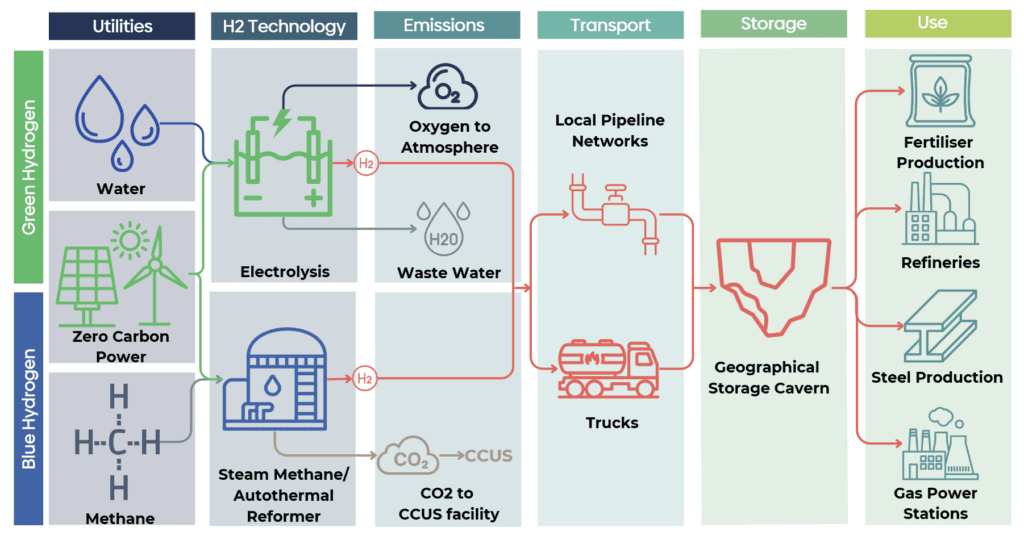I recently came across an article titled: The paradox of important but ineffective Innovation: Lean operators and courageous companies. I don’t necessarily want to criticise the article, and it had an important point to make about the perception of the importance of innovation in business. However, the article worried me as there were two key findings that did not make sense:
24% of respondents felt that innovation was inconsequential to their long-range growth plan;
25% of respondents felt 60% of innovation was largely ineffective
A quote from the article:
The questions and responses in the article worried me. It felt like a poor understanding of what innovation really is and was therefore leading to poor decision making on R&D. It also implied that many senior managers do not understand innovation, which is a worry.
The first point to make, if something is not successful, either commercially or in take-up, then by definition it is NOT innovation. Innovation cannot be a failure, because, by definition, innovation is the successful application of new ideas.
I will refer to Tidd and Bessant’s book ‘Managing Innovation: Integrating Technological, Market and Organizational Change Wiley. Kindle Edition’, Page 16 (Tidd et al., 2005)
Innovation is the successful exploitation of new ideas’ – Innovation Unit (2004) UK Department of Trade and Industry.
‘Industrial innovation includes the technical, design, manufacturing, management and commercial activities involved in the marketing of a new (or improved) product or the first commercial use of a new (or improved) process or equipment’ – Chris Freeman (1982) The Economics of Industrial Innovation, 2nd edition, Pinter, London.
As Peter Drucker said (referred to by Tidd and Bessant)
A few observations we can derive from this basic understanding of innovation. Innovation cannot be a failure, as it is, by definition, the successful application of new ideas to bring about a commercially successful change in an organisation. Also, innovation does not only refer to the implementation of physical inventions. Innovation includes systems, artifacts, processes, organisation, structures marketing etc. Innovation does not have to be ‘new’; it can be an implementation of pre-existing technology or systems to bring about change. Innovation is not just science or invention of new tangible artefacts, it encompasses the entire gamut of the business process. Innovation can occur just as easily and quickly in a service company, such as a restaurant chain as it can in an automobile manufacturer.
As Peter Drucker pointed out, ‘Innovation is a skill that can be learned and practised’.
The mistake many managers make, is they fail to understand their business so that they can differentiate where R&D dollars should be spent to maximise the chance of innovation.
Keith Pavitt provided a useful taxonomy, that allows anyone to quickly understand ‘Sectoral Patterns of Technical Change’ (Pavitt, 1984). The main contention of Pavitt is that users’ needs to determine technological trajectories. By describing user needs, we discern appropriate areas for investment. It is an academic thesis that sounds very theoretical and impractical. Still, it poses eight questions that quickly allow firms to understand the locus of innovation in their particular sector.
- Who is the customer?
- Are the customer’s price-sensitive or performance-sensitive?
- Is it a service?
- Where does the technology come from?
- Can innovation be commercially protected?
- Are there opportunities for scale economies?
- What is the industrial structure?
- Are there opportunities for vertical or horizontal integration?
Knowing who the customer is and the problem that the customer is trying to solve is paramount. A customer may be price sensitive, or performance-sensitive, or both. For example, if you contract a brain surgeon to operate on your brain, most people would be concerned about the skills of the surgeon rather than the salary he is paid. People who buy Apple phones are prepared to pay a premium for performance (perceived or real; it does not matter). However, someone buying food at a supermarket is mostly concerned about price. This differentiation is the first clue to strategies for innovation.
- If the customer is price sensitive, then innovation needs to focus on process, implementation of production systems that enable the product to be made more efficiently, quicker, and therefore cheaper.
- If the customer is focused on performance, then generally the innovation is science-led, or design-led product improvement. Pharmaceutical drugs, for example, are science-led, and they need to have proven efficacy. The Pharma industry is performance orientated and science-led. The product may at a later stage become price sensitive, but usually only after the patent runs out and the mass take-up of the drug is such that production can be scaled up to benefit from economies of scale.
Is it a service? is a really important question. A service is defined as something that is consumed at the point of production. Delivery of a service is not the same as delivery of a product. Generally, customers are less concerned about ‘technology’ and more worried about the quality and performance of the service. For example, a meal at MacDonalds is a service. What do the customers want from Macdonalds? A consistent (quality) product delivered quickly within minutes. In the case of MacDonalds customers are also price sensitive. MacDonalds are extraordinarily innovative, in their streamlining of production, standardisation of product, and management of the supply chain. By contrast, a Five Michelin restaurant is wholly artisan food production, focused on invention and quality. If you can afford to visit a top-class restaurant you are unlikely to be concerned about price. Indeed a cheap five-star restaurant is likely to attract fewer customers not more, because the service is perceived to be high-end, customers expect a high-price. There is still innovation, even in this artisan space. Chefs need to invent signature dishes to establish a reputation and differentiate in the market.
Where does the technology come from? guides the locus of innovation. Technology can be supplier led or in-house development. It can be science-led, design-led or focused on production engineering. Understanding where the technology comes from focuses the investment into the right areas. Science led innovation dominates electronics, chemicals and pharma. Specialised suppliers are important to food production industries or resource extractive industries. For example, major oil companies generally manage large capital intensive projects but rely on specialist suppliers for their equipment and specialist engineering houses for the design. In the oil industry, generally, innovation is supplier led.
Can the innovation be commercially protected? This area is an important question as it controls attitude to risk. If a product or process can be patented a firm is more likely to take risk, the only trick is to make sure there is a sufficient diversity of products in development in the portfolio to spread the risk. The product areas that cannot easily be protected then relies on other factors, such as being first in the market, being cheaper or innovative marketing to differentiate the product.
Opportunities of scale. If something can be scaled up, then process and production engineering becomes very important for innovation, especially leveraging the supply chain to innovate to drive down cost. A classic example is the automobile industry. Henry Ford realised that the creation of a continuous production line and division of labour would enable mass production of the Model T Ford to drive down cost.
Horizontal or vertical integration is important to understand in terms of ability to diversify into other markets or sectors. High horizontal integration means that firms can quickly apply their products in new dissimilar markets. For example, electronic databases and related software can be applied in any industrial sector that relies on data management. In contrast, specialist robotics and industrial firms may only specialise in one industry such as auto-manufacturing. They can apply their systems and products to different parts of the production line (vertically) but are so specialised that they are unable (or unwilling) to seek out alternative industrial sectors to apply their products.
An excellent example of understanding the Sectoral Taxonomy of Pavitt, is a recent conversation I had with a friend.
His firm is selling specialist tools to enable oil companies to abandon old oil wells efficiently. He described a situation where he had spent a long meeting discussing the price of supplying the equipment.
The question I asked:
The answer was, probably first performance-sensitive and then price-sensitive. I then asked the question, is it a product or service that you are selling. This question is a tricky one, since it is a technological product (a piece of hardware). However, the customer consumes it as a service. You deploy the tool, and the customer consumes the service at the point of deployment. Therefore my conclusion was that this business should be (1) performance-focused and (2) focused on responding to customers requests for improvement in the service. Therefore, innovation should be focused on performance and processes that improve overall service. There were some other important questions, such as can your tools or techniques or hardware design be protected. If not, the incremental improvement and innovative marketing will be more significant. Price is only an issue once you get past product and service, and only if there is a large enough market to benefit from economies of scale.
Hopefully, you can now see that innovation is the successful implementation of knowledge and ideas to generate commercial returns. Any firm that fails to innovate, by definition, cannot be successful, and will surely die. The most shocking thing about the original article was that 25% of managers believed that innovation was either mostly unsuccessful or unimportant.
For more insights, I would recommend the book
Tidd, Joe; Bessant, John. Managing Innovation: Integrating Technological, Market and Organizational Change. Wiley. Kindle Edition.
I would also like to fully acknowledge the MSc course Energy Policy at the University of Sussex and Paul Nightingale, who has instructed me in many of the ideas presented. I have borrowed much of the content from lectures given by Paul.
Further Reading
Pavitt, K., 1984. Sectoral Patterns of Technical Change: Towards a Taxonomy and a Theory. Res. Policy 13, 343.
Tidd, J., Bessant, J., Pavitt, K., 2005. Managing innovation [electronic resource] : integrating technological, market and organisation change / Joe Tidd, John Bessant, Keith Pavitt., in: Managing Innovation: Integration Technological, Market and Organizational Change.





